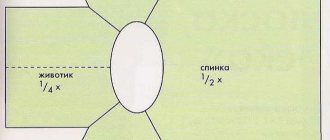Why do dogs suffer from conjunctivitis?
Typical causes of the disease are:
- multiple infectious diseases (including the most common - piroplasmosis, plague, trichiasis, corneal erosion and others) of various etiologies (fungal, bacterial, viral);
- vitamin deficiencies;
- mechanical injuries;
- exposure to aggressive chemical environments, compounds and substances on the outer membranes of the eye;
- individual (including allergic) reactions to medications;
- lack of tear fluid (with keratoconjunctivitis);
- inflammation of adjacent tissues, etc.
In the countries of Southeast Asia, Central and North America, the causative agent of conjunctivitis in dogs can be thelasia insects.
The indicated reasons provoke purulent discharge from the conjunctival sacs, giving the eyes of animals a very unpleasant appearance.
Animals with weakened immune systems are more susceptible to the disease.
Diseases of the French Bulldog
All dogs get sick, and French bulldogs are no exception, despite their strong constitution.
The owner must constantly take care of the bulldog’s health, noticing any changes in the pet’s behavior and well-being.
Bulldogs are prone to allergic reactions to various irritants.
Due to the characteristics of their exterior, they are susceptible to diseases of the eyes and ENT organs; Often both the spine and the pet’s hind legs are affected.
The most common types of allergies in the French Bulldog are food allergies, contact allergies (dermatitis), and reactions to parasites.
Main manifestations of an allergic reaction:
- skin itching and rash; colic in the stomach and flatulence; nausea and diarrhea; sneezing, difficulty breathing; redness and swollen areas under the fur; hair falls out in certain areas.
First of all, it is necessary to find out at what time of year these symptoms occur.
Allergies to mold and dust do not depend on the season and occur throughout the year. There is an immediate need to respond to changes in behavior.
If any manifestation of allergy occurs after eating, the menu should be reviewed.
Even second-grade food can be dangerous for your pet’s health, as it may contain harmful components.
Most often, food allergies are caused by certain types of meat (beef) or milk products (cottage cheese), as well as food that contains gluten.
Many owners of French bulldogs feed their pets the same way: porridge with beef or offal.
The benefits of such nutrition are rather doubtful. Nutrition should be varied, balanced, appropriate to the age and needs of the animal.
Alas, there are no guarantees that second-class meats and offal meet generally accepted quality standards.
They may contain pathogenic infections . Thus, not only will an allergic reaction be provoked, but also infection of the entire body as a whole.
If a food allergy is detected, it is necessary to carefully review your pet's diet.
It is necessary to exclude eggs, fish and raw meat, as well as red vegetables from the diet.
When eating fried, salty and confectionery foods, stomach problems often occur.
Eating dairy products and flour products can cause colic in your pet.
The most acceptable cereals for feeding are buckwheat and rice, as they are not allergenic.
Even after treating your dog to a forbidden treat once, it will take a long time to treat the possible consequences of the allergy.
It is necessary to monitor the amount of food taken, since French bulldogs are a breed of dogs prone to obesity.
Excess weight can have a negative impact not only on the spine, but also on the development of the entire body as a whole.
Dogs are recommended to exercise and take long walks.
Types of conjunctivitis and their manifestations
The most common types of conjunctivitis are:
- purulent;
- catarrhal;
- fibrinous;
- follicular;
- phlegmonous;
- allergic;
- keratoconjunctivitis.
According to the nature of the course of the disease, there are (1) chronic and (2) acute conjunctivitis.
Purulent conjunctivitis is accompanied by thick yellowish discharge from the eyes.
With catarrhal conjunctivitis, redness of the mucous membrane of the eye is first noted, which is replaced by swelling and, somewhat later, the release of serous fluid.
Fibrinous conjunctivitis is characterized by protrusion (layering) of the conjunctiva over the surface of the eyelid.
Follicular conjunctivitis is characterized by the presence of multiple distinctly red follicles on the surface of the third eyelid against the background of profuse lacrimation and gradual redness of the entire inner eyelid.
Keratoconjunctivitis is characterized by a sharp decrease in the amount of tear fluid and “drying out” of the mucous membrane of the eye.
How can you tell if your dog is sick?
First of all, you should pay attention to the dog’s atypical behavior. She may start to worry and whine. Also refuses to eat or sleeps poorly. These are all signs of a malfunction of the body. Particular attention should be paid to the French bulldog puppy. The puppy should be quite vigorous and active, cheerful and playful. He should not have excessive discharge from his eyes or nose, they should be clean.
If the “baby” is lethargic and apathetic, his nose is dry and hot, this is the first sign of an incipient illness. First of all, you need to measure the temperature. It is measured by inserting a thermometer into the dog's rectum. A normal temperature is considered to be between 38 and 39 °C. Even a slight deviation of half a degree indicates the presence of a serious disease. This requires the intervention of a qualified veterinarian. Further in the article, the main signs and types of ailments that the owner of a French bulldog may encounter will be discussed.
How to recognize conjunctivitis in dogs
Depending on the type of disease, distinctive symptoms are distinguished.
1. Catarrhal conjunctivitis. It all starts with redness of the connective membrane of the eye, and is later accompanied by swelling. Serous fluid begins to leak from the eyes. This form of the disease is acute, so it can become chronic.
2. Purulent conjunctivitis in dogs. The onset of the disease is characterized by obvious discharge from the eyes, which over time becomes thicker and turns yellow. The conjunctiva begins to turn red and swelling appears. The disease causes severe discomfort, which makes the animal depressed.
3. Follicular (allergic) conjunctivitis in dogs. First, the conjunctiva becomes inflamed, and dark red follicles are observed on the inner surface of the third eyelid. It is distinctive that this form often becomes chronic and can cause exacerbations for several years.
Etiology - why the eyes turn red
“Red eyes” is the most common clinical symptom noted by pet owners. Redness of the eyes as a clinical symptom cannot indicate the severity of the disease, its type or prognosis. The first diagnostic step is to localize the redness. It can be focal and generalized, external and internal and extend to the conjunctiva, third eyelid, periscleral region and cornea. When a patient is brought in with the main complaint of a red eye, the cause of the redness is first identified, then it is determined whether the animal has superficial or internal eye damage. Sources of eye redness include:
- conjunctival vessels;
- scleral vessels;
- cornea;
- front camera;
- neovascularization of the iris.
“Red eye” may not affect the health of the animal in any way, but with some diseases associated with it, vision may weaken or disappear, the eye may be destroyed, and sometimes the disease can cause the death of your pet.
Conjunctivitis in a dog
Redness indicates a superficial or deep pathological process. Internal eye pathologies most often require urgent treatment and can lead to blindness in the absence of appropriate treatment. The superficial ones include the conjunctiva and superficial vessels of the cornea. Among the internal causes of redness are the vessels of the sclera, the anterior chamber of the eye and neovascularization of the iris.
| Sources of eye redness | Causes | Symptoms and diagnostic tests |
| Vessels of the conjunctiva. Their noticeable injection indicates a superficial lesion. | Keratoconjunctivitis sicca (KSK), dystrichiasis, primary corneal disease or irritation | The vessels are thin and branched, and move with the conjunctiva. To differentiate between conjunctival vasodilation and scleral vasodilation, a drop of phenylephrine or epinephrine is applied to the affected eye. The vessels of the conjunctiva constrict within 15 seconds. |
| Scleral vessels. Vasodilation indicates internal damage to the eye and can lead to blindness developing within 24-48 hours if the primary disease is not treated. | Anterior uveitis, glaucoma, scleritis, deep corneal lesions | The vessels of the sclera are thick, straight and not branched. They do not move with the conjunctiva and do not narrow when a vasoconstrictor is administered. |
| Vascularization of the cornea. May indicate superficial or internal disease depending on the location of the vessels. | Superficial vessels indicate nonspecific irritation (eg, ulcers, foreign body, SBS). Deep vessels are a nonspecific indicator of the response to a deep pathological process (scleritis, deep scleral disease). | Superficial vessels cross the limbus and are often long and branching. Deep vessels: short and straight with brush-like edges. It is not visible how they cross the limbus, since they are located deep. All lie to one certain depth. |
| Anterior chamber - hyphema | The same causes and pathological picture as with bleeding in other areas of the body | These include: trauma, tumor, hypertension (more common in older dogs with kidney disease), uveitis, coagulation disorders, retinal detachment, secondary neovascularization (the retina secretes substances that cause neovascularization. These new vessels may have increased permeability). |
| Neovascularization of the iris | Chronic uveitis, lymphosarcoma | In dogs with a lightly pigmented iris, a large arterial ring is normally visible. |
Differential diagnosis of red eye based on additional characteristics:
- state of visual function. With conjunctivitis, vision is not affected. On the contrary, patients with glaucoma often experience serious vision problems, and even blindness. Anterior uveitis does not cause blindness, but the patient may have corneal edema or aqueous opacification, aqueous hyperemia, hyphema, or hypopyon, which can also affect vision;
- pain reaction. The acute period of glaucoma is very painful: with the occurrence of blepharospasm and general depression. The chronic stage of the disease is also extremely painful, but changes in behavior are less pronounced. Similarly, severe anterior uveitis may be moderately painful, but chronic uveitis shows no signs of pain. Conjunctivitis is painless, or irritation is moderate;
- presence of outflows. Anterior uveitis and glaucoma are often accompanied by increased lacrimation. Conjunctivitis is characterized by serous, mucoid or purulent discharge from the eye.
- condition of the conjunctiva . With conjunctivitis, the conjunctiva is thickened, diffusely hyperemic and edematous. In glaucoma and anterior uveitis, it has a normal consistency.
- injection of blood vessels. It is important to establish what causes the redness: congestion in the vessels of the conjunctiva, episcleral region or ciliary body. Mobilization of the conjunctiva by flushing will cause its vessels to move, but will not affect the condition of the deep vessels. For example, topical application of phenylepinephrine causes immediate discoloration of the vessels of the conjunctiva, but practically does not affect the vessels of the episclera and ciliary body. The redness of conjunctivitis is most obvious on the surface of the eyelids and arch of the eye. The vessels are usually narrow, and diffuse stagnation is observed. The episcleral vessels, in which congestion occurs in glaucoma, are much wider and are visible on the bulbar surface towards the border. The vessels of the ciliary body, stagnant in uveitis, are indistinguishable because they are located deep. But they make the eye red. Please note that both glaucoma and anterior uveitis can contribute to the appearance of congestive processes in the vessels of the conjunctiva, as well as in the episcleral and ciliary vessels.
- hypertrophy of lymphatic follicles with conjunctivitis; Glaucoma can cause band keratopathy (stretching and thinning the sclera), as well as retinal and optic disc atrophy. In glaucoma, excavation of the optic disc is pathognomic;
- Anterior uveitis is accompanied by loss of transparency of the aqueous humor. This may manifest as aqueous hyperemia, hyphema, hypopyon, or cellular debris on the anterior lens capsule and posterior cornea. As a result, anterior or posterior synechia may form;
- Anterior uveitis can spread to the back of the eye, leading to posterior uveitis and inflammation of the ciliary body. In severe cases, optic neuritis/atrophy and endophthalmitis occur.
Red whites of eyes
The most common cause of redness in the whites of the eyes in dogs is allergies. Most often, an allergy that manifests itself as discharge from the eyes and conjunctivitis occurs to environmental components (pollen, dust, etc.), and an allergy that occurs on the skin is often due to flea bites. Secondly, allergies occur to food components.
Doberman Pins and Great Danes are especially susceptible to redness of the whites of the eyes.
Less commonly, proteins acquire a red color due to chronic eye pathologies. Chronic disease of the cornea can lead to vascularization with possible granulation of corneal tissue. Hyphema can fill the entire chamber, then the entire cornea will be red and completely cover the iris and pupillary opening. Bleeding in the vitreous can also cause redness of the eyes (this should be distinguished from the normal red fundus reflection in dogs). A retinal detachment may appear as blood vessels against the caudal side of the lens.
Lump in the corner of a dog's eye
The disease is accompanied by redness and thickening of the edges of the eyelids, scales, crusts and ulcers appear at the base of the eyelashes. Eyelashes fall out, the edges of the eyelids become very thick, which leads to constant tearing and cicatricial inversion.
Follicular conjunctivitis is a chronic non-infectious inflammation of the mucous membrane of the eyes, which affects its lymphatic follicles. Mechanical irritants include all kinds of injuries, foreign bodies entering the conjunctival sac, inversion and eversion of the eyelids. All this directly irritates the conjunctiva or disrupts its protection from harmful external influences - dust, smoke, prolonged exposure to direct ultraviolet and x-rays
The occurrence of this pathology is due to the loose structure of connective tissue and subcutaneous tissue. Most often, hypertrophy and prolapse of the third eyelid gland occurs in dogs of such breeds as:
- mastino;
- bullmastiffs;
- Great Danes;
- English bulldogs;
- chow-chow;
- Shar Pei.
Inflammation of the third eyelid in dogs, noticeable to humans, can occur in connection with various ailments. So, with prolapse (loss) of the third eyelid, its protective shell is no longer held in place by the thin ligament that holds the gland in the orbit of the eye. Due to prolapse of the third eyelid, it can be further injured, which is fraught with complications. A similar phenomenon often occurs in dogs aged 3 to 9 months during a period of rapid growth.
During this period, dogs also experience such a pathology as a third eyelid crease: the thin cartilaginous leg that holds the eyelid breaks off, and the eyelid hangs over the eye as in the previous case. It is also worth noting that third eyelid adenoma in dogs can be caused by other diseases: disorders of the central nervous system, traumatic injuries to the cornea, atrophy of the eyeball, and others. After localizing the redness, a full examination of the eye should be performed to diagnose concomitant diseases, give a prognosis and prescribe treatment. To do this, the pupillary reflex, blink reflex, intraocular pressure are determined, the intraocular fluid is examined, the cornea is stained with fluorescein, the Schirmer tear test, and the eyelids, cornea, iris, lens, vitreous body and fundus are carefully examined.
Additional tests to determine the cause of eye redness:
- Gauss test, excluding corneal rupture;
- Detection of damage to the cornea (staining it with fluorescein);
- Measurement of pressure inside the eye;
- Analysis of eye secretions using a microscope;
- Assessment of the functioning of the lacrimal glands;
- Ultrasound of the eye to clarify the overall picture;
- X-ray of the skull;
- Computed tomography of the skull;
- Magnetic resonance imaging of the brain.
Canine distemper virus often causes conjunctivitis with epiphora, mucous or purulent discharge. Along with systemic symptoms, keratoconjunctivitis sicca, corneal ulceration, chorioretinitis and optic neuritis may also occur. Cytological examination of scrapings from the third eyelid gland usually reveals cytoplasmic inclusions. Direct or indirect immunofluorescence antibody testing can also be performed.
Treatment of French Bulldogs
(1) professional, used exclusively by certified veterinarians and requiring professional skills and knowledge, and
(2) general, which are available to most ordinary dog lovers and are intended to provide veterinary medical care to the animal at home.
Ideally, treatment of animals should be carried out under the supervision of a veterinarian who is able to accurately diagnose the disease, the degree of its development, prescribe effective drugs and determine their optimal dosage.
Conservative treatment of conjunctivitis is ensured by the introduction into the animal’s body of medications of narrowly targeted action (dexamethasone, Tinset, betnesol, teralen, interferon, sofradex, etc.).
Treatment of follicular conjunctivitis in dogs often involves the use of polymer films based on (1) sodium sulfapyridazine or (2) kanacimin, or more radical and painful methods (cauterization of the conjunctiva, for example).
The primary symptoms are a constant flow of tears, which should alarm the owner.
The first thing to do is wipe your eyes with cotton wool soaked in boiled water or chamomile infusion. Limit walking for a while so that the wind does not blow out sore eyes, and dust and weeds do not irritate the mucous membrane. If the tears do not stop, and redness appears, then you cannot postpone a visit to the veterinarian. Only a specialist can prescribe the necessary therapy.
How to treat conjunctivitis in a dog at home? The course of treatment includes antibiotic ointments and anti-inflammatory eye drops. The most common drops: sodium sulfacyl, chloramphenicol drops, kanamycin and sofradex drops. Eye drops should be applied at least four times a day.
For conjunctivitis, effective ointments:
- tetracycline or chlortetracycline;
- etazolic.
The new generation of treatment involves ophthalmic medicinal films, which, when attached to the conjunctiva, dissolve and produce a therapeutic effect.
Causes
Red eyes are often a physiological reaction of the body. This happens due to various irritants. If you notice that the animal’s proteins have changed color, but there are no symptoms, then this is clearly not a pathology and look for the problem elsewhere. It is important to remember how the dog behaved in recent days, especially two hours ago.
There are the following reasons why a dog has red eyes: stress, emotional distress, allergic reaction, trauma. Aggressive animals are able to hide their anger. Reddening of the whites causes punishment and humiliation. Give the dog a rest, feed it well so that the incident can be safely forgotten.
An allergic reaction cannot be ruled out. Red conjunctiva indicates the body's hypersensitivity to a certain product.
Breed Predisposition
There are dog breeds for which red eyes are normal. For example, albino dogs lack coloring pigments and therefore all capillaries are visible. Pekingese, bulldogs, pugs, and spaniels are also prone to this pathology.
Redness as a physiological reaction
If a dog has red whites of its eyes, this is not always the cause of pathology in the animal. Sometimes such problems are a natural reaction of the body to the influence of exogenous factors.
The dog experiences severe stress or anxiety, and attacks of aggression appear against the background of fights with other animals.
Overheat. It occurs when a pet is exposed to direct sunlight or in a room with high air temperatures for a long period of time. Therefore, there is a rush of blood to the eyes and shortness of breath, nausea, and coordination are impaired.
When exposed to dust, dirt, or strong wind. This is accompanied by lacrimation, drying out, and discharge.
Reaction to chemicals and detergents. If there are no irritants, the redness quickly disappears.
First aid for conjunctivitis
In situations where veterinary care is not available or is not expected soon, it is possible to alleviate the animal’s suffering from conjunctivitis at home.
First, you should rinse your pet’s eyes with chamomile decoction, furacillin or a solution of potassium permanganate. For these purposes, cotton pads are the most convenient to use.
To remove purulent crusts, Vaseline oil is used, which is applied to the affected surface of the eye using the same cotton pads or swabs.
To neutralize harmful bacteria and other pathogens, they practice instilling potent drugs into the eyes: anandin, maxidin, ciprovet and others.
The manipulations described above should be repeated three times a day for about a week. Already on the second day, the symptoms of conjunctivitis will begin to weaken, and after a few days they will completely disappear.
Vaccination: the importance of the procedure
Timely vaccinations will protect the “French” from diseases. Especially from diseases such as:
- distemper (canine plague);
- rabies;
- parainfluenza;
- trichophytosis;
- leptospirosis;
- hepatitis;
- parvovirus enteritis.
There is a specific vaccination schedule:
- At the age of 8–10 weeks, the first vaccination is given.
- 12-13 weeks - the second vaccination is given.
- At the age of 30-31 weeks - the third vaccination.
- A dog is vaccinated against rabies no earlier than one year of age.
The first three vaccines are repeated exactly one year later. It is desirable that the times coincide. The administration drug should also be the same. Experts advise deworming your French bulldog two weeks before vaccinations.
Necessary prevention
To keep your pet from getting sick, proper care is necessary. First of all, this is proper feeding of the dog. If the bulldog eats ready-made food, then purchase premium or super-premium varieties. They contain all the additives necessary for normal life.
When a dog changes teeth, it is recommended to add potassium and phosphorus to its food.
If your pet is breastfed, it is necessary to add vitamin complexes to the food.
Vitamins are contained in the following products:
- Vitamin A is responsible for proper metabolic processes and is found in apples and liver.
- The action of vitamins from group B is similar to the action of vitamin A; they are found in fermented milk products, liver and yeast.
- Vitamin C helps the absorption of calcium and organizes the work of connective tissue. There is a lot of it in tomatoes and liver.
- Vitamin D promotes the absorption of potassium and phosphorus and is found in vegetable oils, dairy products, cheese, cottage cheese, etc.
- Vitamin E is necessary for the production of red blood cells and improves skin condition. It is found in meat, buckwheat, and liver.
- Vitamin H is involved in lipid-carbohydrate metabolism and helps improve the condition of the hair. Contained in liver, kidneys, yeast.
- Vitamin K is necessary for the health of the nervous system and for maintaining phosphorus in the body. Contained in seafood, cabbage, yolks.
All major diseases of the French Bulldog can be prevented or, in any case, detected at the very beginning of their development.
As is the case with other breeds, preventive measures come down to following the basic rules of a healthy lifestyle:
- Undergoing routine vaccination against hepatitis, enteritis, plague, rabies and other dangerous diseases.
- The use of vitamin and mineral supplements, for example, “8 In 1 Excel Deter”, “Beaphar Laveta Super”, “WOLMAR WINSOME PRO BIO PRO HAIR” and others.
In the case of French bulldogs, fish oil, vitamin D to maintain bone strength, as well as vitamins E and H, which protect the skin and coat and strengthen the reproductive system, are especially important.
Thus, when purchasing a French bulldog puppy, you should immediately become thoroughly familiar with the diseases that this breed especially often suffers from. If you take timely preventative measures, the risk of developing the disease is significantly reduced.
Routine vaccination
To reduce the risk of most dangerous diseases in French bulldogs, they must be vaccinated on time. Timely vaccinations can protect your dog from diseases such as canine distemper (distemper), rabies, parainfluenza, trichophytosis, leptospirosis, hepatitis, and paraviral enteritis.
In order for vaccinations to help your pet, they must be carried out according to the following schedule:
- first vaccination – dog age: eight to nine weeks;
- second vaccination – dog age: twelve to thirteen weeks;
- third vaccination – dog age: thirty to thirty-first week;
- Rabies vaccination – dog age: no earlier than twelve months.
After the first three vaccinations, they must be repeated every year at the same time. All vaccinations must be done using the same drug, for example, Nobivak. Before each vaccination, the French Bulldog must be dewormed (deworming) two weeks before. For this purpose, you can use the drug "Drontal".
Before each vaccination, you need to check the physical condition of your pet - he must be absolutely healthy. Also, pregnant and lactating French Bulldog bitches should not be vaccinated.
Rabies vaccination should also be done every year, for example, using the drug Nobivak DHPPI RL.











